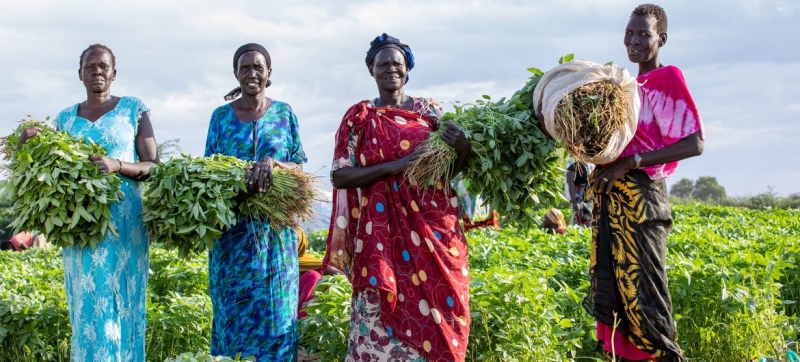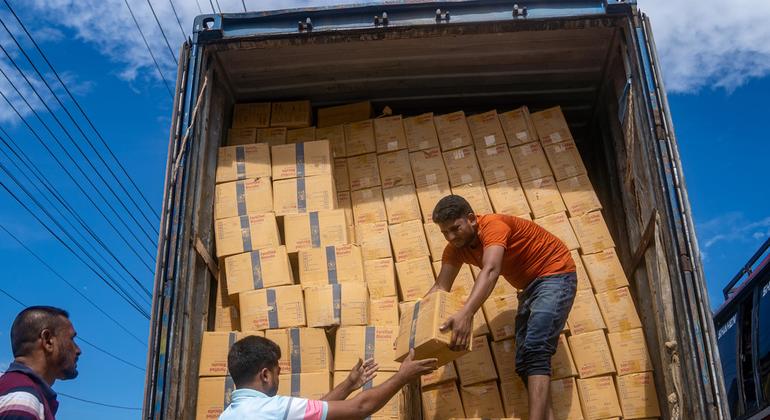
The transportation process is an important link in the supply chain of fresh fruits and vegetables. Losses in transit: the relationship between transportation systems and losses in the food industry Economic development
This Wednesday, October 16, the world will once again celebrate World Food Day. Our planet produces enough food to feed its entire population, and yet the problem of hunger has not yet been solved: more than 733 million people on Earth suffer from malnutrition due to conflicts, weather shocks and economic downturns. Another important factor is food loss during transportation. Our colleagues from the Food and Agriculture Organization of the United Nations (FAO) talk about this.
The world is full of striking contrasts. While in some parts of the world shiny new refrigerated vans loaded with fruit pull up to the supermarket ramp, in other parts of the world farmers cultivating fields on mountain slopes hoist baskets of their produce on their heads to deliver it to the only road to the nearest shopping center or market.
The transport process is a critical part of the fresh fruit and vegetable supply chain, accounting for a significant share of the 13 percent of global food losses that occur from harvest to retail. To address this issue, it is necessary to assess all aspects of fresh produce transport and offer tailored solutions.
Packaging and Other Important Details
Packaging clearly plays an important role in reducing food losses. The Food and Agriculture Organization of the United Nations (FAO) is devoting significant efforts to training producers in optimized packaging methods, such as the use of rigid, reusable plastic crates to minimize mechanical damage to produce during stacking and transport.
It is equally important to ensure that temperature and air circulation requirements are met. The best time to transport produce is during cooler times of the day, and the best transport is with an open body. Produce also needs to be protected from sunlight and drying out. FAO initiatives are funding the purchase of light-coloured tarpaulins for semi-trailers that allow air to pass through and protect produce from the elements. FAO is also supporting the production of flatbeds for trucks to improve transport conditions.

Alternative Transportation Modes
In many low- and middle-income countries, transportation routes are only suitable for passenger and light-duty vehicles, so vans are often used to transport fresh produce. As a result, the products are exposed to high temperatures and heat stress, lose moisture and quickly spoil.
In addition, it is often necessary to take into account the peculiarities of the landscape. For example, in mountainous areas there are often no access roads. That is, in order for the products to get to the markets, they must be delivered to the nearest public road, and in many places on the planet such cargo is carried on the head or transported by horses.
This problem is especially relevant for tropical countries, where favorable conditions for growing valuable and nutritious crops such as broccoli, carrots, strawberries, Chinese cabbage and herbs exist only at higher altitudes. In such cases, a zipline, funicular or cable car will be a good alternative to traditional modes of transport, the use of which will simplify the delivery of goods to purchasing points and markets.
Preventing Human Errors
Due to the fact that the human factor is one of the causes of mechanical damage to fresh produce during loading, transportation and unloading, training should be given due attention. Careless loading and unloading and improper stacking of boxes can cause significant losses. Impact, crushing and friction are particularly damaging to delicate fruits such as bananas and mangoes, which can become damaged or even unfit for consumption.
For example, FAO’s work in the Philippines has reduced losses in fresh produce supply chains by 38 percent by eliminating the repackaging of produce destined for supermarkets in Manila.
FAO provides training on best practices for handling packaged produce to stakeholders throughout the supply chain, emphasizing the economic benefits of such approaches.
Partnerships can make a difference
Public-private partnerships are often used to address transportation challenges. For example, with FAO support, a fresh produce packing centre was built on land allocated by the Lao government to facilitate trade in horticultural crops between the Lao People’s Democratic Republic and Thailand.
Following the success of the initial cross-border trade, the Lao government and a Thai private company established a public-private partnership to operate the packing centre and cold chain for goods shipped to Thailand. About 40 percent of fresh produce meets market quality requirements for export, while the remaining 60 percent is sold domestically, primarily to the hospitality sector.
One of FAO’s activities is to promote the development of organized transport systems in low- and middle-income countries to efficiently move perishable fresh produce from farm to market with minimal losses.
Inefficient transport systems are among the leading causes of unacceptably high food losses, especially of foods rich in vitamins and other nutrients. Addressing this problem holistically – for the benefit of people and the planet – is therefore an important area of work for FAO and its partners.
